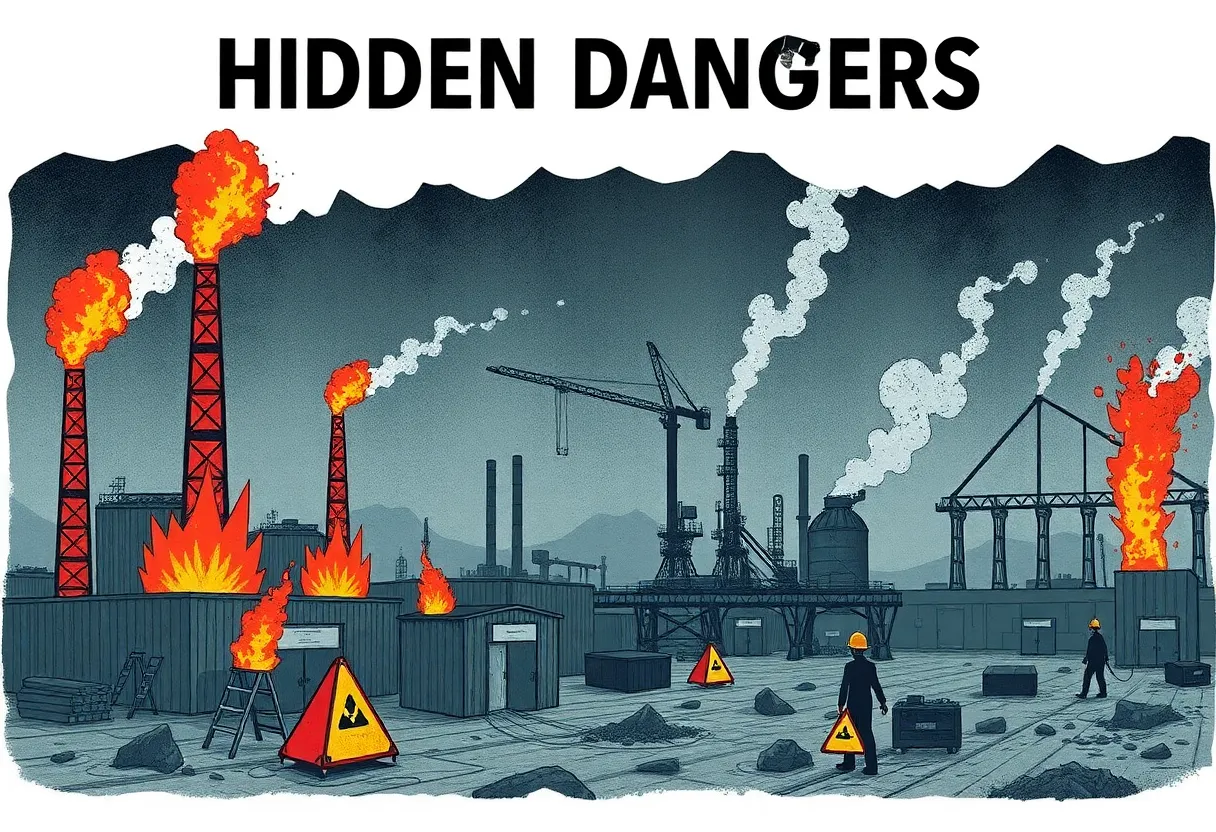News Summary
Global Asbestos Crisis: Unmasking the Deadly Dangers
The world is facing a grim reality as the infamous mineral asbestos continues to wreak havoc on public health. With significant production hotspots in Brazil, China, Kazakhstan, and Russia, asbestos is not only used in various industries but also poses severe health risks that claim tens of thousands of lives each year.
Cancer Linked to Asbestos Exposure
Asbestos is notorious for its link to deadly diseases, including lung cancer, mesothelioma, and asbestosis. The World Health Organization (WHO) has reported some staggering statistics, revealing that about 125 million people globally are exposed to asbestos in their workplaces. This exposure is responsible for approximately 90,000 deaths annually, emphasizing the urgent need for action.
2019 Study Highlights Alarming Trends
A major scientific study examining asbestos-related fatalities between 1990 and 2019 spotlighted several shocking trends. Tracheal, bronchus, and lung (TBL) cancer emerged as the leading cause of death connected to asbestos, with China reporting a staggering 73.31% increase in age-standardized mortality rates among men. Meanwhile, Kazakhstan recorded the highest rates of asbestos-related death in both genders. On the other hand, Brazil has maintained a consistent trend of fatalities, while countries like Russia and Kazakhstan peaked in asbestos-related deaths in 1994.
The Environmental Toll
Asbestos is not only a danger to human health but also stays relevant as an environmental concern. The particles can travel great distances underground, posing a significant threat to water supplies. Meanwhile, more than 30 million tons of asbestos fibers exist in the United States alone, primarily due to their extensive use in construction materials. The management of asbestos waste has become a pressing topic, especially as landfills become potential sites for future contaminations.
Regulatory Actions and Future Planning
In response to this crisis, various nations are taking steps to mitigate the risks associated with asbestos. The United States is contemplating a comprehensive ban on asbestos, although it has a history of importing asbestos products until very recently. In Europe, countries are pursuing aggressive policies to limit and eventually eliminate asbestos use, with national removal programs becoming more commonplace. Meanwhile, Australia grapples with its own asbestos problem, with over 1.2 million tons of asbestos estimated to be disposed of every year.
Innovative Disposal Techniques on the Rise
Amidst the chaos, innovation is blossoming. Companies worldwide are developing methods to permanently break down asbestos fibers. For instance, initiatives in the Netherlands are underway to treat asbestos cement waste into a harmless material suitable for reuse in construction. Similarly, a firm in the UK claims to have devised a safe method for transforming asbestos into a non-hazardous material.
Urgent Call for Global Action
The data is clear, and the risks are magnified. Experts also indicate a pressing need for a global ban on all asbestos forms and more proactive measures to eliminate health and environmental hazards posed by this insidious mineral. Continued monitoring and evaluation will be essential in assessing the long-term impacts of asbestos exposure and the management of its waste.
As the world grapples with the ongoing asbestos crisis, it becomes increasingly evident that immediate and decisive action is crucial for protecting public health and ensuring a safer environment for future generations. Time is of the essence, and the call for a ban on this dangerous substance must be answered with urgency.
Deeper Dive: News & Info About This Topic
HERE Resources
FDA Proposes Stricter Asbestos Testing for Talc-Containing Cosmetics
New Mesothelioma Lawsuit Filed Against Johnson & Johnson
Mesothelioma: Alabama’s Fight Against Asbestos Exposure
The Rising Tide of Pleural Diseases: An Alarmingly Growing Health Concern
Uncontrolled Wildfires in Southern California Trigger Mandatory Evacuations and Health Alerts
Revolutionizing Mesothelioma Treatment: The Rise of Opdivo
Connecticut Jury Awards $15 Million for Asbestos Case
Major Wildfires Ravaging Los Angeles: A Hidden Asbestos Threat Emerges
2024: A Pivotal Year for Mesothelioma Treatment Advances
FDA Unveils Proposed Rule to Combat Asbestos in Talc Products
Additional Resources
- Statista: World Mine Production of Asbestos
- Wikipedia: Asbestos
- BMC Public Health: Asbestos Exposure and Health Risks
- Google Search: Asbestos Health Risk
- Medical Xpress: Current Asbestos Levels Exceed Exposure Limits
- Encyclopedia Britannica: Asbestos
- BBC Future: The Global Asbestos Waste Problem
- Google News: Asbestos News



















